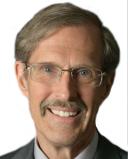Media
The Role of Leadership in Creating Intense Group Hatred
How high-conflict leaders and modern viral media can escalate mild prejudices.
Posted July 22, 2019

In this article, I challenge the idea that some leaders today are simply expressing group hatreds that are seething under the surface of large groups of voters. I believe it’s the other way around: A group leader—especially a high-conflict leader—can activate latent prejudices and teach intense hatred and even violence. Often they use emotional messages against a selected Target of Blame in easily repeated sound bites, chants, jokes, or songs.
We’re All Prejudiced
Let’s start with the reality that we are all prejudiced and racist and sexist at some level. You can’t live in the modern world without being exposed to millions of unconscious messages about different groups of people, which we absorb the same way that we absorb advertising. Watching the news, young black men are more often portrayed as dangerous than as successful professionals.
Attendees at political rallies and town hall meetings are more often portrayed as yelling than seriously contemplating important issues. Young, slim women are desirable, and heavy women are disdained. Mentally ill people are wide-eyed and wild.
Yet we are also generally tolerant, curious, and friendly toward those we know personally from different backgrounds. The question is: Which traits—latent prejudice or latent tolerance—will get activated at any particular time? This is where leadership comes in.
Throughout human history, leaders have guided us to act as a group to solve problems. They teach us what behavior is allowed, what’s highly desirable, and what is forbidden. They also provide social glue by giving us shared tasks and teaching us shared beliefs, and in times of war identifying shared enemies.
High-Conflict Leaders
High-conflict leaders have four main characteristics:
- Preoccupation with blaming others (their Targets of Blame)
- Lots of all-or-nothing thinking (and all-or-nothing solutions)
- Unmanaged or intense emotions (driving their whims and edicts)
- Extreme behavior (which 90 percent of people would never do)
Many people with these characteristics who want to be leaders also have narcissistic and/or sociopathic traits, which can make some of them very powerful in wartime, but very dangerous in times of peace—especially toward their Targets of Blame. They create crises and then portray themselves as the only hero who can fix it. They are not nice people and tend to treat everyone as adversaries, even their family members, temporary friends, and temporary allies.
But most of the time, leaders with these characteristics don’t get very far. Those around them consider them foolish or crazy and generally won’t tolerate their extreme statements and behavior. They tend to be ignored, shunned, or put in jail for their extreme behavior.
Modern Viral Media
Research shows that the world is less threatening today than ever before in history.1 Yet we are consumed by fear of groups: political groups, racial groups, religious groups, and so on. What has changed in today’s world in recent years?
It’s modern, electronic, viral media. It can spread emotional messages fast and wide to millions of people at the same time. They are absorbed unconsciously without us even realizing it. This contrasts with written physical media, such as books, magazines, and newspapers, which tend to enter our brains more consciously and slowly—generally the left hemisphere of our brains. You can pick it up or set it aside. You can think about what you agree with and what you don’t before you absorb it.
Modern viral media emphasizes “face and voice news.” You absorb facial expressions and tone of voice more unconsciously and more through the right hemisphere of the brain.2 This is also where relationship-building tends to grow more readily. "Are you my friend or my foe?" asks the right brain, and it mostly pays attention to your facial expressions and tone of voice to find the answer, without consciously or logically thinking about it.
And last, but not least, modern viral media is allowed to promote just one side of a political issue. For TV and radio, this is because of the end of the Fairness Doctrine in the 1990s, which required airing both sides of a political issue to get a broadcast license. For social media, there have never been rules requiring more than one point of view. So today around the world, many people have only one source of news, either because their government controls it, or because they voluntarily watch one-sided news, which allows very powerful isolated messages.
Emotional Repetition in Isolation
Thus, the secret ingredient for spreading group hatred is emotional repetition in isolation. This is what today’s high-conflict politicians can do that couldn’t be done before the invention of the radio, television, and Twitter—modern, electronic, viral media.
Radio and movies: In Germany in the 1920s, there was more acceptance and rights for Jews than they ever had before. However, Adolf Hitler took the German population’s residual anti-semitism and escalated it through constant repetition of his hateful messages. Historians say that Hitler spoke ten times as much as all the other politicians.3 He was the first politician to use radio to speak directly to people in their homes with his emotional messages. Millions of people heard their leader’s voice over and over again speaking to them personally.
In 1932, an American reporter in Germany said the “average Hitler supporter” was strongly dissatisfied with the federal government, “but had no specific anti-Semitic bias,” and “his economic status was secure” as he was never unemployed.4 Yet by the 1940s, after 10 years of constantly speaking on the radio and showing movies of his emotional speeches at mass rallies, he was able to rachet up anti-semitism to such a high level that millions of Jews were jeered by their neighbors, easily removed from their communities, and killed by the Nazis. His speeches were in isolation, as he totally controlled the media, and no other competing voice or point of view was heard.
Television: In the early 1950s, Joe McCarthy was one of the first politicians to use the emotional potential of television—a brand new electronic media—to hold Senate hearings in millions of people’s homes. People saw his face and heard his voice as he accused hundreds of people of being communists and wanting to overthrow the United States government. And his voice was in isolation, as there was no one being heard or seen who strongly disagreed with his intense, emotional messages of hatred as he ruined one person’s career after another.
Until the Berlin Wall and the Iron Curtain fell in 1989, the Soviet Union had total control of its media with a lockstep message for millions of citizens. But during the 1990s, Russia had early-stage democracy, an opening up of multiple media, and an openness to modern lifestyles, including LGBT people. But in 2000, the new President, Vladimir Putin, took significant control of the legislature, the judiciary, and the media: “Putin had acquired de facto control of Russia’s three largest and most important television channels before the end of his first year in office.”5
Social media: In 2016, Rodrigo Duterte was elected President of the Philippines. “Facebook [is] the source of almost all news in the Philippines. It’s a losing battle—false news is so rooted in the Philippines that one Facebook executive has called it “patient zero” in the global misinformation epidemic.”6
In 2016, Donald Trump was the first politician to routinely use Twitter as a new form of electronic, viral media. He used it primarily to promote emotional messages of division. It’s hard to find a tweet that didn’t strongly disparage someone or strongly praise someone in a form of all-or-nothing thinking. It’s true that these contain the written word, but most of his tweets were repeated and repeated daily through the face and voice media of television and radio.
It may be that this combination of Twitter and TV is what worked the best since some researchers say that his use of television is what got him elected. “Among older white Americans, the core demographic where first the primaries and then the general election was decided, television far outstrips the internet as the most important source of news… In a sense, you could argue, all those tweets mattered mainly because they kept being quoted on TV.”7
And this was in isolation for many voters, as no other politician used it anywhere near as much as he did, and many Trump voters were known for only watching Fox News. One study of nearly all counties nationwide shows that his electoral success was not only based on his use of emotional media, but also based on the absence of newspapers in the counties he won: “The results show a clear correlation between low subscription rates and Trump’s success in the 2016 election… [This] analysis suggests that Trump did, indeed, do worse overall in places where independent media could check his claims.”8
Conclusion
High-conflict politicians have been with us forever and tend to occur on the far-right or the far-left, because of their all-or-nothing thinking. It’s their use of modern viral media which appears to be getting them elected suddenly over the past decade around the world. And teaching hate of their Targets of Blame—generally small and powerless groups—is essential to their messages.
What history and research suggest is that modern, electronic, viral media allows political leaders who talk constantly and emotionally to get large groups of followers for their messages of hate against their Targets of Blame. Furthermore, by being the first to use a new form of viral media, a high-conflict politician can reach an audience with emotional repetition in isolation, causing them to more unconsciously absorb his or her messages as well as to form an intensely emotional relationship with the leader.
In each case (and there are several more I discuss in my new book), after other opinions are heard just as much, or the high-conflict leader is removed, these messages of hate tend to fade back to minor levels. That is until the next high-conflict politician comes along spreading a simple message of hate to a new, unsuspecting audience who hears them repeated emotionally thousands of times in relative isolation.
References
1. Steven Pinker, The Better Angels of Our Nature: Why Violence Has Declined (New York: Viking, 2011).
2. Allan Schore, Right Brain Psychotherapy (New York: W.W.Norton & Company, 2019).
3. & 4. Andrew Nagorski, Hitlerland: American Eyewitnesses to the Nazi Rise to Power (New York: Simon & Schuster Paperbacks, 2012).
5. Michael McFaul, From Cold War to Hot Peace: An American Ambassador in Putin's Russia (New York: Houghton Mifflin Harcourt Publishing Company, 2018).
6. The Editorial Board, "The War on Truth Spreads," New York Times, December 9, 2018.
7. Ross Douthat, "Trump Hacked the Media Right Before Our Eyes," New York Times, March 21, 2018.
8. Shawn Musgrave and Matthew Nussbaum, "Trump Thrives in Areas That Lack Traditional News Outlets," April 8, 2018.




